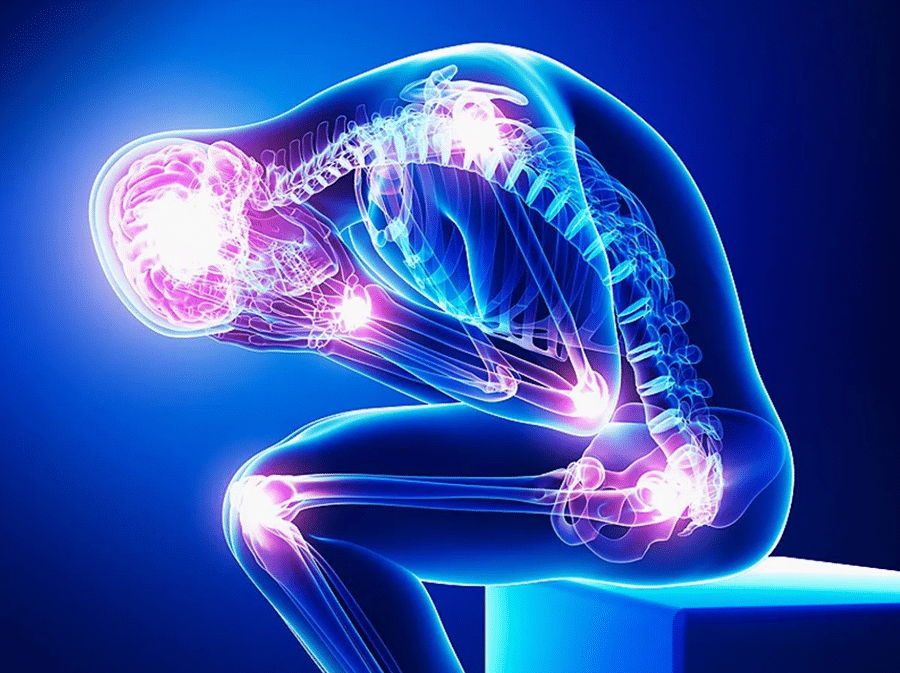Arthritis is a term that many hear, but few fully understand. This common condition affects millions worldwide, causing pain, stiffness, and a reduced quality of life. Yet, arthritis isn’t a one-size-fits-all diagnosis; it comes in various forms, each with its own set of symptoms and treatment options. Understanding these differences is crucial for effective management and treatment. This article delves into the three main types of arthritis —Osteoarthritis, Rheumatoid Arthritis, and Gout— highlighting their symptoms, causes, and risk factors. By the end, you’ll be better equipped to identify and manage this often debilitating condition.
Contents
What Is Arthritis?

Arthritis is a general term used to describe over 100 conditions that affect the joints, the areas where two or more bones meet. These conditions cause inflammation in the joints, leading to symptoms like pain, stiffness, and swelling. The severity can range from mild discomfort to debilitating pain, affecting daily activities and overall well-being.
Understanding the type of arthritis you or a loved one may have is crucial for effective treatment. Different types of arthritis require different approaches to management and care. Early diagnosis and appropriate treatment can make a significant difference in the quality of life for someone with arthritis. Therefore, it’s essential to recognize the symptoms and consult healthcare providers for a proper diagnosis.
The Anatomy Of A Joint

To comprehend how arthritis affects the body, it’s essential to first understand the basic anatomy of a joint. A joint is a complex structure made up of bones, cartilage, ligaments, tendons, and synovial fluid, which allows for smooth movement. Cartilage acts as a cushion, preventing bones from rubbing against each other, while synovial fluid lubricates the joint for easy movement.
However, when arthritis sets in, these components are compromised. In some types of arthritis, the cartilage wears down, causing bones to rub against each other. In others, the synovial membrane becomes inflamed, leading to pain and stiffness. Knowing how a joint is supposed to function can help you better understand what goes wrong when arthritis occurs, setting the stage for a discussion on the different types of this condition.
Type 1 – Osteoarthritis (OA)

Osteoarthritis, often abbreviated as OA, is the most common form of arthritis. It occurs when the protective cartilage that cushions the ends of the bones wears down over time. This wear and tear leads to symptoms like pain, stiffness, and a loss of flexibility in the affected joints. OA commonly affects joints in the hands, knees, hips, and spine, although it can occur in any joint in the body.
Risk factors for developing OA include age, obesity, and a history of joint injuries. The older you get, the more susceptible your joints become to wear and tear. Similarly, carrying excess weight puts additional pressure on weight-bearing joints like the knees and hips, accelerating the degenerative process. Now that you’re familiar with OA let’s move on to a different kind of arthritis, one that involves the immune system.
Type 2 – Rheumatoid Arthritis (RA)

Rheumatoid Arthritis, or RA, is an autoimmune disorder that primarily affects the synovial membrane lining the joints. Unlike OA, which is a degenerative condition, RA occurs when the immune system mistakenly attacks the body’s own tissues. This leads to inflammation of the synovial membrane, causing painful swelling that can eventually result in joint deformity.
Common symptoms of RA include joint pain, swelling, and stiffness, often affecting the same joints on both sides of the body. Risk factors for RA include genetics, age, and hormonal changes, such as those that occur during pregnancy or menopause. While OA and RA are chronic conditions, the next type of arthritis you’ll learn about comes in episodes, making it a different beast altogether.
Type 3 – Gout

Gout is a form of arthritis that occurs when there is an excessive build-up of uric acid in the body, leading to the formation of urate crystals in the joints. These crystals trigger intense episodes of pain, redness, and swelling, often affecting the big toe but can occur in other joints as well. The pain from a gout attack can be excruciating and usually occurs suddenly, frequently waking people up at night.
Risk factors for developing gout include a diet rich in purines (found in red meat and seafood), excessive alcohol consumption, and certain medications like diuretics. Family history also plays a role, making some individuals more susceptible to gout than others. Unlike the chronic nature of OA and RA, gout often comes in episodes, providing periods of relief between attacks.
Treatment Options

When it comes to treating arthritis, a multi-faceted approach often yields the best results. Medications such as pain relievers and anti-inflammatory drugs can help manage symptoms. In more severe cases, corticosteroid injections or even surgical options like joint replacement may be considered. It’s crucial to consult healthcare providers for a treatment plan tailored to your specific type of arthritis and symptoms.
Physical therapy is another avenue for treatment, offering exercises that can improve joint function and reduce pain. Techniques such as heat or cold therapy can also provide temporary relief. The key is to find a treatment plan that addresses your symptoms effectively while minimizing side effects.
Lifestyle Changes For Managing Arthritis

Managing arthritis isn’t just about medications and doctor visits; lifestyle changes can have a significant impact on your symptoms. A balanced diet rich in anti-inflammatory foods like fruits, vegetables, and fish can help manage inflammation. Exercise, while it may seem counterintuitive, can actually improve joint function and reduce stiffness.
Stress management techniques such as meditation and deep-breathing exercises can also play a role in arthritis care. Stress can exacerbate symptoms and trigger flare-ups, making stress management an essential part of a comprehensive treatment plan. By adopting these lifestyle changes, you empower yourself to manage arthritis symptoms more effectively.
Be Aware Of The Complexities Of Arthritis
Understanding the complexities of arthritis is the first step toward effective management. While this article has provided an overview of the three main types of arthritis and their symptoms, it’s crucial to consult healthcare providers for a diagnosis tailored to your specific condition. Armed with this knowledge and professional guidance, you’re better positioned to take control of your health and navigate the challenges arthritis may bring.


